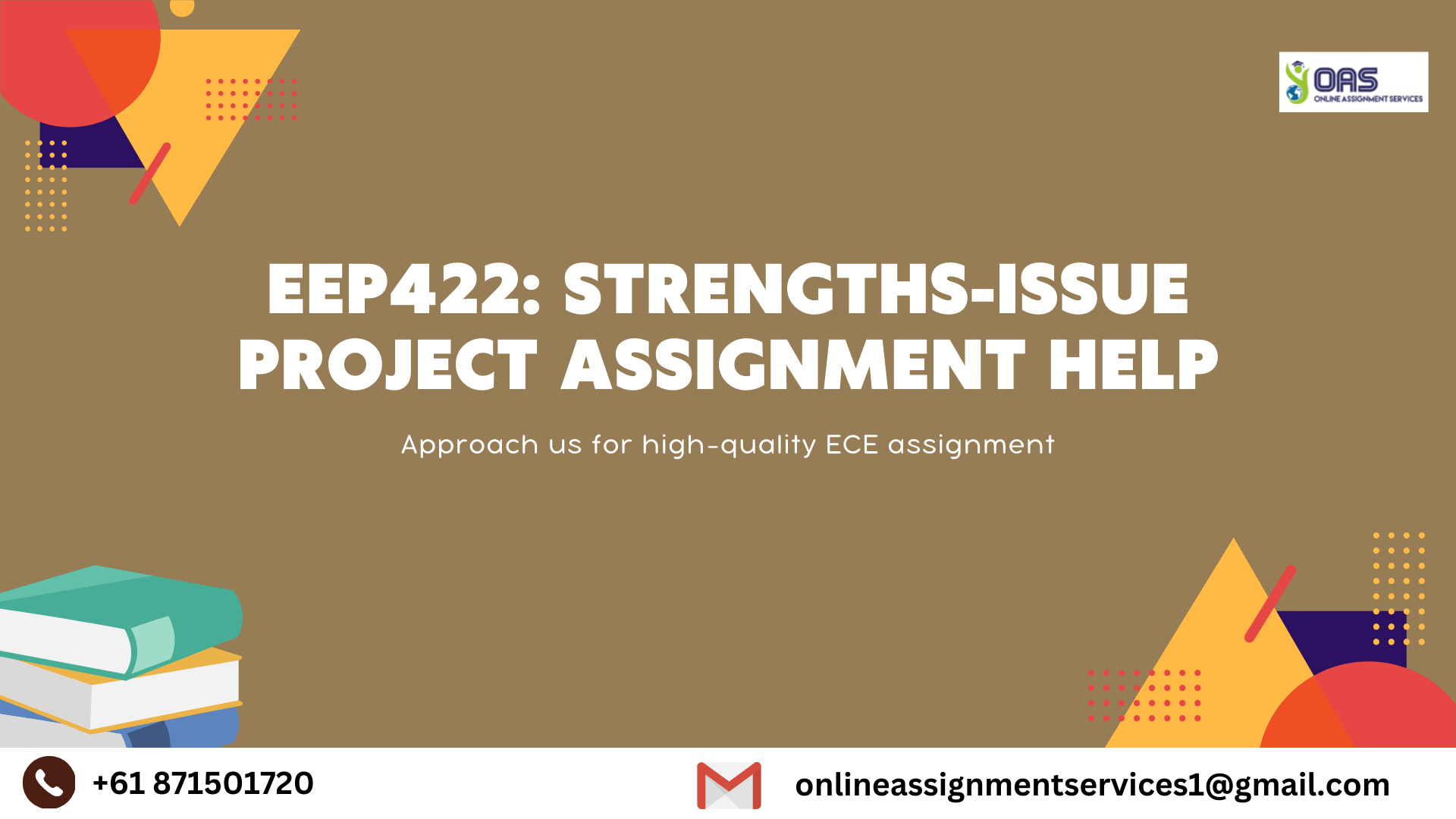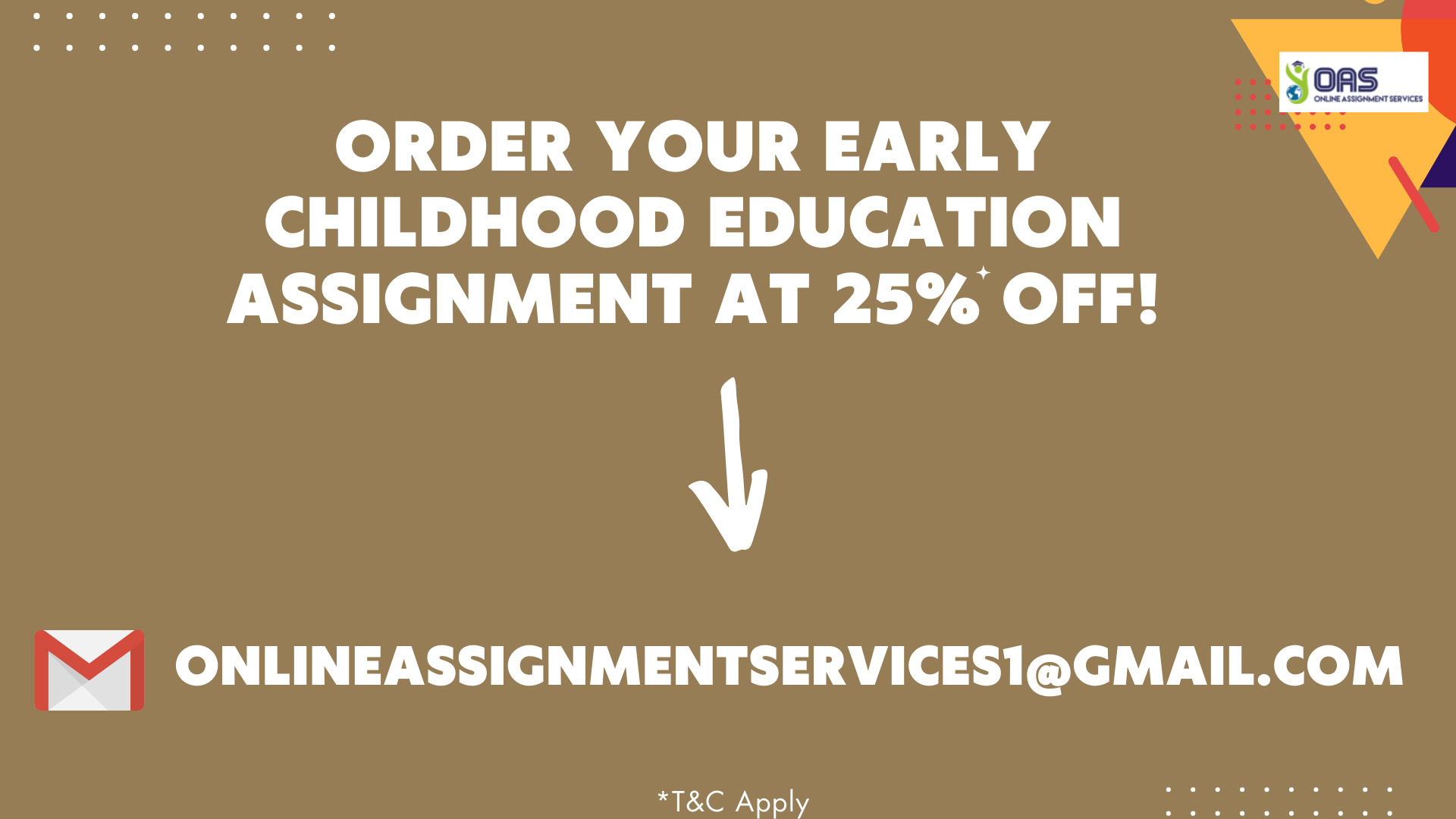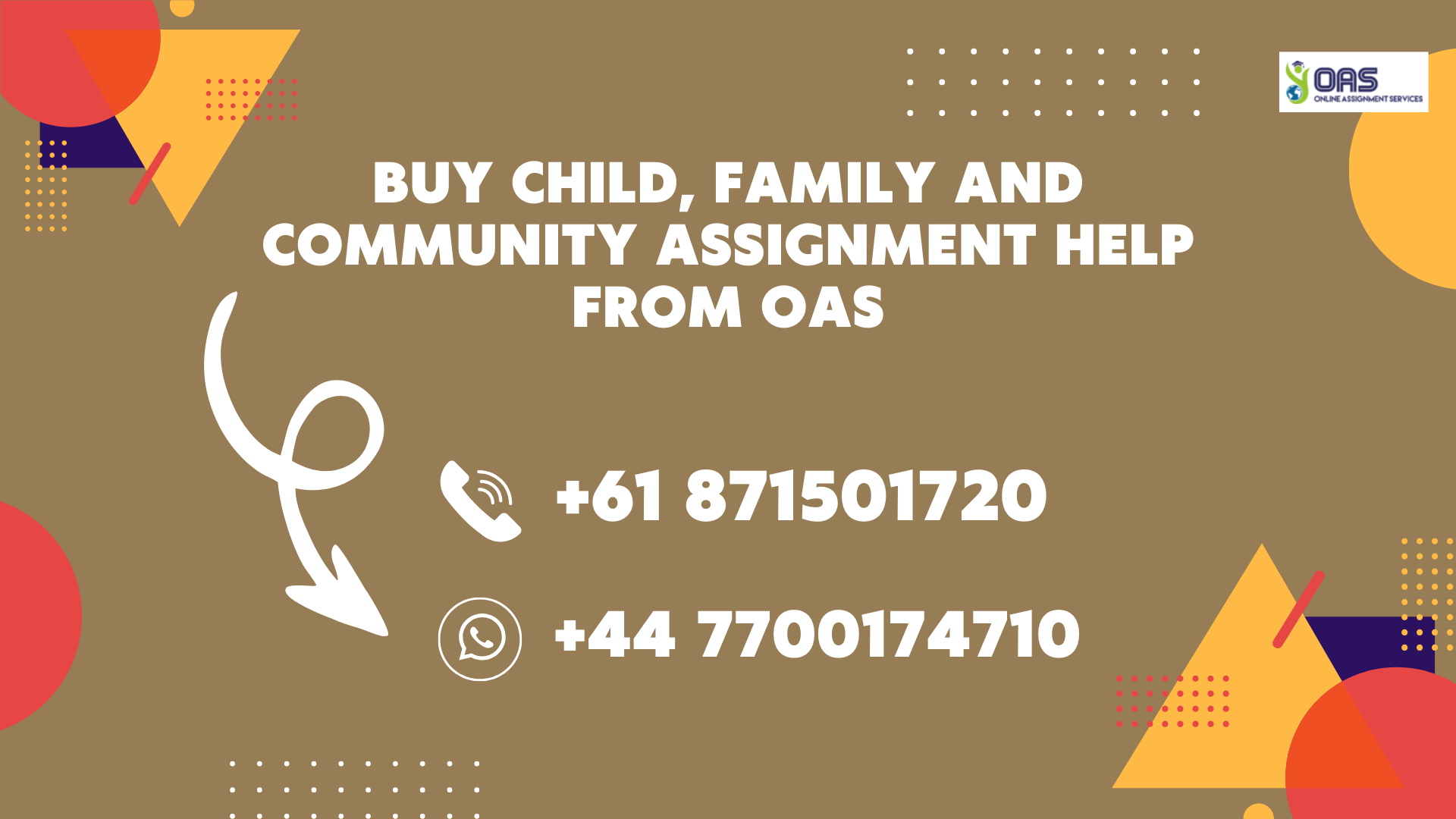EEP422: Strengths-Issue Project Assignment Help

Question
EEP422: In this assignment for Charles Sturt University, the student is supposed to select a topic that has an impact on families, communities, early childhood educators, and children. The student is required to examine methods to use a Strengths Approach to address the issue and analyze it within the context of early childhood education.
Solution
In providing this Child, Family, and Community Assignment help, our experts have presented a broad debate and study of a complicated early-life issue: Cultural belonging’s place in early childhood education and its stakeholders, which is analyzed in detail using the Strengths Approach.
Introduction
The first section presents a brief justification behind the choice for this project, including your decision to research the topic. You can read a snippet of the complete section below:
Culture is a multidimensional phenomenon that is fundamental to the lens of perception of an individual throughout their life. Right from childhood, culture informs the immediate environment of a person, which is called the microenvironment in Bronfenbrenner’s Bioecological Model (Tudge et al., 2017). Subsequently, one’s culture informs their values, beliefs, and their choices in life. This makes culture a crucial consideration for early childhood educators and all the stakeholders in this context (Brown., 2020).
This is only a snippet of the complete essay. If you are looking for Early Childhood Assignment help in Australia for yourself, let us assist you! Mail us at onlineassignmentservices1@gmail.com.
Cultural belonging and its effect on stakeholders in early childhood education
The following section discusses the impact that the broad issue has on all parties involved and how crucial is it to early childhood education and care. Scholarly literature sources have been used to thoroughly analyze the chosen issue.
This report aims to explore cultural belonging and its value for different stakeholders in the context of early childhood education. Here cultural belonging refers to the sense of association, identity, and inclusion that a child draws from their cultural background. Being a fundamental part of the dynamics in the environment of a child, culture informs their perceptual lens through which they define themselves, those around them, and their interactions with the environment (Tudge et al., 2017). Accordingly, a child’s identity is rooted in their culture, i.e. their language, their food, their ethnicity, their spiritual and religious orientation, and their familial background (Arndt., 2020). Furthermore, when the child moves to an educational environment, they carry this culture-informed perceptual lens with them and accordingly employ it to make sense of the environmental dynamics (Arndt., 2020). Therefore, culture not only informs the psychology of the child but also their comprehension of environmental dynamics and their response to it (Arndt., 2020). As such, it is a crucial consideration for all the stakeholders engaged in early childhood-education, which will be discussed in the subsequent sections.
Stakeholder2: The Families
Another important stakeholder in early childhood education are the families of the children (Hanssen et al., 2023). As such, in addition to the children, cultural belonging also strongly influences the families of these children. Particularly in the context of culturally diverse families, the family members take it as their responsibility to promote a sense of cultural belonging and a strong cultural identity among their children (Arndt., 2020; Van Gorp., 2021). While children get exposed to and get conditioned to a different culture in the early childhood education centres, families try to inculcate a feeling of cultural pride among them (Arndt., 2020). As such, the conservation and propagation of their culture through their children is of utmost importance to families, right from the early childhood education and care context (Hanssen et al., 2023). Accordingly, the early childhood education system and educators acknowledging and promoting cultural belonging among children from early childhood has a significant effect on the families (Australian Government Department of Education [AGDE]., 2022).
Stakeholder3: The Community
The community is another stakeholder in early childhood education and care, which is significantly impacted by cultural belonging. Similar to the previous discussion in the context of families, the interaction between the community and early childhood education and care context is bidirectional in nature, with both these parties influencing each other in almost equal capacity (Eek-Karlsson, L., & Emilson., 2023). For instance, cultural acknowledgement in early childhood education centres promotes cultural inclusivity in the community, alternatively, the engagement of community representatives with early childhood educators promotes the latter to develop a culturally sensitive environment for the children.
If you want to buy Child, Family, and Community Assignment help from Ph.D. experts, Call us at +61 871501720 today!

Column Approach Template
This section presents a Column Approach table, half of which we have provided for your guidance below:

We provide the Best assignment writing services in Bathurst. Get Bachelor of Education Assignment Help from OAS experts today! WhatsApp us at +447700174710 to get in touch with our subject matter experts.
Rationale of Planning steps, strategies, solutions & goals
This section describes how the Column Approach Template’s planning processes align with the values and tenets of the Strengths Approach. In this section, our experts have cited pertinent scholarly works to support the arguments being made.
The strategies formulated for Sam under the planning section of the Column Approach Template are rooted in the values advocated by McCashen’s Strengths Approach (2005). Firstly, almost all the steps planned for Sam are based on his strengths and current capabilities, advocated by McCashen’s approach (Collins & Fenton., 2021). Here Sam’s strengths include his cultural heritage, the strong bond with his family and community, and his interest in music and dance activities. Moreover, the planned steps also focus on the current capacities of those around him, like his family’s willingness to help him learn English, his educator’s professional experience, and his peers’ curiosity to engage with him. Accordingly, the planned steps reinforce a positive perspective of emphasising assets and current capacities to optimise his development, as advocated by McCashen’s approach (Fenton et al., 2016; Mahony & Fenton., 2021). Secondly, the planned strategies also adhere to the contextual perspective advocated by McCashen’s approach (2005). Accordingly, the planned strategies acknowledge Sam’s physical, social, cultural, cognitive, and his familial context (Mahony & Fenton., 2021).
If you are looking for Early Childhood Assignment help in Australia for yourself, let us assist you! Mail us at onlineassignmentservices1@gmail.com.

